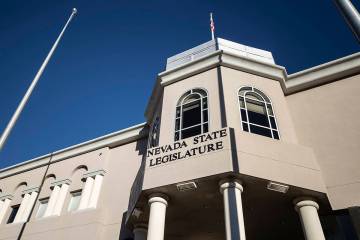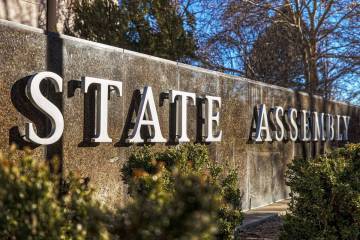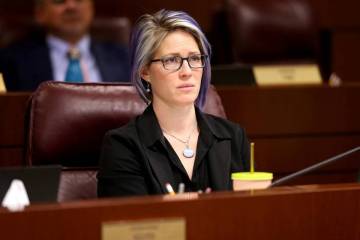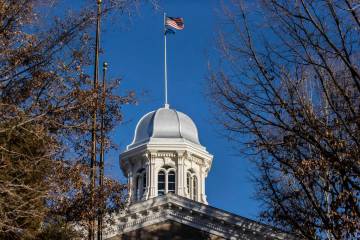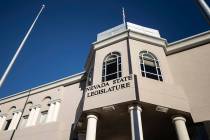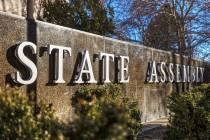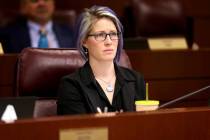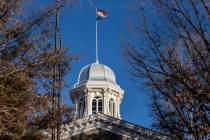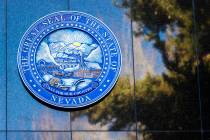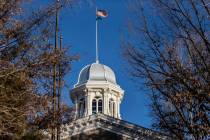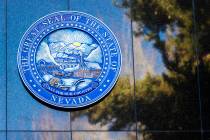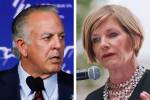Carson City gets much-needed good news on money
CARSON CITY — Reports of Nevada’s economic death have been greatly exaggerated, it would seem.
That was the takeaway this week after the state’s Economic Forum revised its revenue projections for Nevada for the next two years, giving lawmakers working to craft the next state budget an additional $586 million worth of wiggle room.
Last summer, lawmakers used a special session to fill a $1.2 billion budget hole caused by economic fallout from the COVID-19 pandemic. And in December, the forum’s panel of fiscal experts projected that the pandemic would continue to pinch the state’s wallet for at least a few years until the public felt more comfortable traveling back to Las Vegas and putting their tourist dollars back into the state coffers.
But it turns out even a worldwide pandemic can’t keep people out of Vegas casinos. Relaxed COVID restrictions combined with more federal stimulus money in people’s pockets helped March gaming wins hit an eight-year high, and analysts said they expect that consumer confidence to continue across most major revenue streams.
All of that adds up to a roughly $9.1 billion general fund budget for lawmakers to spend over the next two years. That doesn’t include the $2.9 billion that the state is set to receive from the American Rescue Plan relief package, either.
So after months of talking about cuts, lawmakers are facing a new question: How will they spend this new windfall?
There appears to be some agreement among Democrats and Republicans that restoring cuts to health care and education budgets should be a priority. But Gov. Steve Sisolak said that the huge influx in money is also an opportunity to “transform” the state.
What that transformation could look like probably will start to take shape over these final three weeks of the session, which ends on May 31.
Policy bills moving
Beyond the rosier economic outlook, the week that was in Carson City included movement on some of the biggest policy proposals this session — or at least what remains of them in some cases.
The Senate on Thursday introduced SCR 11, which would create a special committee to study innovation zones, the concept that Sisolak introduced during his State of the State speech in January.
The original proposal, which never made it beyond a circulated draft, would have allowed wealthy tech companies to form separate, semiautonomous governments with county-like powers in rural parts of Nevada. The concept, which was being pushed by Blockchains LLC and their powerful team of lobbyists, never managed to gain steam as rural counties, environmental groups and lawmakers on both sides of the aisle raised questions publicly about it.
Eventually, the idea was scrapped for this session by the governor in favor of the study.
The Democrats’ big health care bill of the session, Senate Bill 420, got its first committee hearing on Tuesday. The bill would create a public health insurance option in Nevada, with the aim of improving the quality, affordability and availability of health care by introducing a low-cost plan to individuals and small businesses.
Unsurprisingly, physicians, hospitals, insurers and business groups led the opposition to the bill, contending that the plan would lead to higher costs in other segments of the health care system.
New deadline looming
Looking ahead, another deadline that typically claims a few dozen bills looms this week as lawmakers inch ever closer to the end of session, or toward the start of an eventual special session, depending on your outlook. On May 14, previously approved bills that moved to the opposite house must pass from committee lest they be considered dead.
Several of the major bills are exempt, including SB420.
Assembly Bill 395, the capital punishment abolition, falls into the latter category, and advocates are hoping the bill doesn’t meet its own death come deadline day.
The bill, sponsored by Assemblyman Steve Yeager, D-Las Vegas, cleared the Assembly on a party line vote last month but finds itself stuck in the Senate Judiciary Committee, where it has yet to get a hearing, and questions remain about whether the Democratic governor would sign it if it were to get to his desk.
Sisolak said last month that he is opposed to capital punishment in “most circumstances” but pointed to the Oct. 1, 2017, mass shooting at the Route 91 Harvest festival as reason for pause on supporting a full abolishment, saying there are “incredibly severe situations that may warrant consideration of capital punishment.”
Sisolak isn’t the only prominent Democrat who has taken issue with getting rid of the death penalty. Clark County District Attorney Steve Wolfson has been outspoken in his support for keeping it on the books.
That’s especially relevant because two of the three Democrats on the committee, Majority Leader Nicole Cannizzaro and fellow Las Vegas Democrat Melanie Scheible, work as prosecutors in Wolfson’s office. Scheible is chair of the Senate’s Judiciary Committee.
Asked Friday if she plans to hold a hearing on the bill next week, Scheible said they are “still working on it.”
There have been talks of a possible amendment to the bill to try and make it align with the governor’s stance, but Scheible said she has yet to see one. In a text, Yeager said that he is “still considering how best to proceed.”
Carson City Journal is a weekly feature that summarizes the major events happening in the capital during the 2021 legislative session and provides a look at what’s coming next.
Contact Capital Bureau Chief Colton Lochhead at clochhead@reviewjournal.com. Follow @ColtonLochhead on Twitter.




